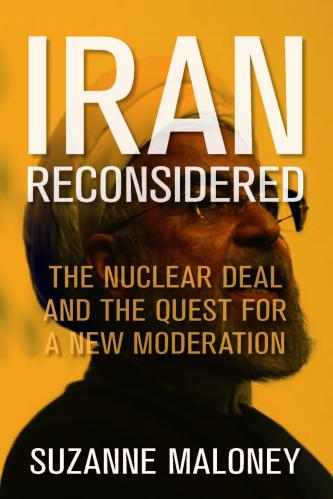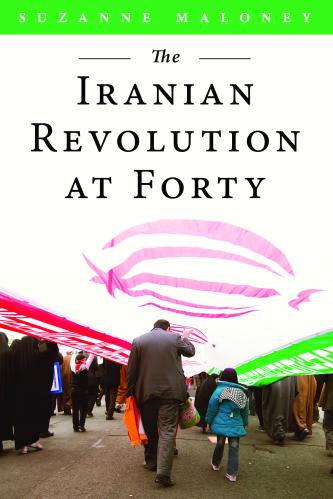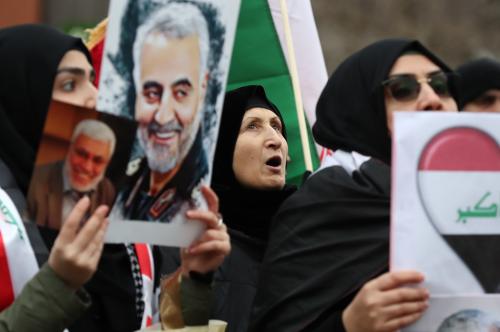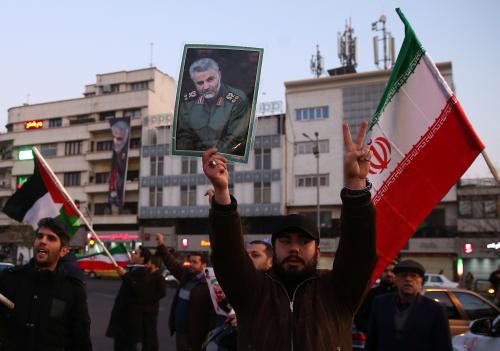Just after the United States killed Iranian military leader Qassem Soleimani, Secretary of State Mike Pompeo justified the attack by claiming: “The entire strategy has been one of deterrence.” Indeed, history may judge the killing based on whether it provokes a spiral that leads to more Iranian and U.S. attacks or helps convince Iran to become less aggressive. The United States seeks to deter Iran from gaining a nuclear weapon and from regional aggression, like its September 2019 attack on Saudi oil facilities and support for anti-Israel militant and terrorist groups.
Judging the success of deterrence is always easier in hindsight. The Cold War is correctly judged a deterrence success, but nuclear war always seemed around the corner while it raged. In 2006, Israel fought a 34-day war with the Lebanese Hezbollah. In its aftermath, analysts warned of another round, but deterrence seems to have prevented a full-blown conflict in the years since.
On the positive side, both sides in public are moving away from the abyss. President Trump put aside his usual bellicose rhetoric and sounded conciliatory in a speech after the attack. While warning Iran of American strength, he also stressed: “We do not want to use it.” Iran’s supreme leader proclaimed its rocket attacks on the United States a “slap in the face” but focused on the need for the United States to leave the region, not further strikes. Actions seem to be following words. The United States has not carried out additional attacks on Iran, while according to a Pentagon official, Tehran “deliberately chose targets that would not result in loss of life” though luck and advanced warning from intelligence also played a critical role. On the positive side for Iran, the U.S. killing of Soleimani has angered many Iraqi leaders, and the possibility that U.S. forces will leave Iraq as a result of their wrath is a potential win.
What are the prospects for deterrence with Iran going forward? The good news is that the Soleimani strike seems to have sent a tough message to Iran. The bad news is that many other factors that favor deterrence are lacking. Confused policymaking and rhetoric on both sides diminish the prospects for success.
The deterrence literature is vast (and the particulars are contested), and it has preoccupied some of the greatest names in the study of international relations. Factors identified with success include the credibility of the threats of force, target state vulnerabilities, the role of domestic elites, escalation dominance, the balance of resolve, the role of positive as well as negative inducements, and clarity and cost of signaling.
Some of these factors clearly bolster deterrence of Iran. The United States enjoys vast military superiority over Iran, which has a weak military, and thus can escalate if necessary. Tehran has long had a front-row seat for the display of U.S. military might and has no illusions about the result of a direct military confrontation. Indeed, the killing of Soleimani further showed the prowess of both the U.S. military and intelligence. In addition, a case can be made that it bolstered U.S. credibility, serving as a short, sharp shock. In the past, even horrific accidents like in 1988 — when a U.S. warship downed an Iran Air flight, killing almost 300 innocent Iranians — highlighted to Iranian leaders the (mistaken) belief that the world would stand by passively while the United States would attack any target. The perception was no doubt reinforced by the U.S. decision to award medals to the Navy officers commanding the ship.
Yet there are many factors that may undermine deterrence. Iran has played up the death of Soleimani and huge crowds turned out for his funeral. This in turn raises the domestic political costs of inaction for Iran’s leaders. Iran, in addition, is hemorrhaging economically, and the huge protests against the regime before the Soleimani killing demonstrate its legitimacy problems, creating an incentive for Iran to push back abroad to shore up its popularity at home. Nor can too much be read into Iran’s relatively cautious approach so far. Tehran has a history of biding its time for revenge and has in the past waited months or even years to retaliate. Trump too has domestic political concerns, and some reports indicate both that he did the strike to distract from impeachment (“wag the dog”) and because he wanted to shore up Republican support as it moves to the Senate.
Resolve may also favor the Iranians. Even ignoring President Trump’s vacillations on the use of force in the Middle East and on whether or not to negotiate with Iran, Americans are increasingly weary of deploying troops in the Middle East and skeptical of war with Iran. Iran, for its part, sees a friendly regime in Iraq as a vital interest and otherwise is playing a long game in the Middle East. Even more important, the United States has threatened the Iranian regime’s survival, its ultimate vital interest.
The role of Iran’s many proxies also creates complexities. The United States has targeted proxy leaders in Iraq, and they too have vowed revenge. They may target U.S. forces for their own reasons, creating a situation where the United States reacts harshly and either blames Iran for the proxy’s action or Iran sees the U.S. response as an escalation. Iran, for its part, may fear that Israeli actions or saber-rattling are part and parcel of a broader U.S. campaign, with Israel serving as a cutout — a misguided view, but one consistent with Iranian beliefs of the U.S.-Israel relationship.
Nor is the United States offering reassurance, creating off-ramps, or otherwise offering inducements for Iran to be less confrontational. After the latest round of conflict, the United States announced new sanctions on Iran (a largely symbolic gesture given the pre-existing extensive economic pressure on Iran), suggesting pressure will continue if not grow. This hard line fits the Trump administration’s policies. In May 2018, in his first major foreign policy speech, Secretary of State Mike Pompeo demanded not only an end to Iran’s nuclear activities, but also questioned the regime’s legitimacy and said that Iran must end its interference in Yemen and Syria and longstanding support for groups like the Lebanese Hezbollah — a long and unrealistic list of demands. Nor do Iranian leaders trust U.S. promises. In particular, the U.S. withdrawal from the nuclear deal without a clear Iranian violation undercuts Iranian confidence in U.S. guarantees.
Both Iran and the United States are sending mixed signals, which can be disastrous for deterrence. The Trump administration has increased the U.S. troops presence in the Middle East even while calling for more troop withdrawals. The president threatened to strike Iranian cultural sites, while the secretary of defense quickly disavowed this. Nor has the United States clearly conveyed to U.S. allies what American goals are and where and when the United States will respond in the future. Some Iranian leaders are declaring that their revenge for Soleimani has just begun even as other leaders claim their missile attacks were not meant to kill Americans. Such mixed messages allow the other side to read into them what they want, confirming pre-existing narratives.
The deterrence picture, in the end, is cloudy. Although the last few days have been promising, the contentious politics on both sides and the confused signaling suggests that any peace may be short-lived.









Commentary
Is deterrence restored with Iran?
January 16, 2020